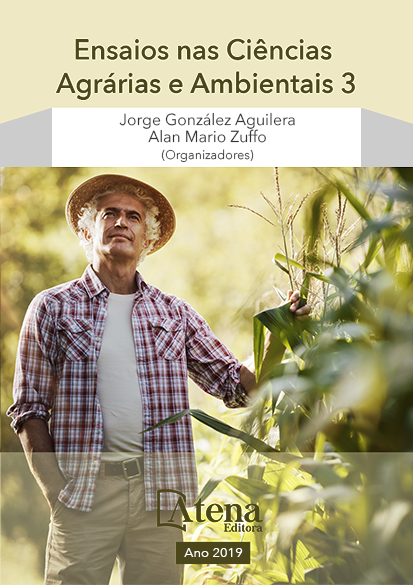
Hidrogel e extrato pirolenhoso na produção de biomassa de plantas de alface
A alface possui alto teor de
água em seus tecidos. Com isso, o déficit
hídrico e até mesmo o excesso de água
associado ao desequilíbrio nutricional afetam
o desenvolvimento vegetativo da planta,
reduzindo assim a produtividade da cultura.
Nesse sentido, objetivou-se com este trabalho
avaliar, a influência de diferentes concentrações
do extrato pirolenhoso associado ao hidrogel na
biomassa de plantas de alface. O experimento
foi conduzido em ambiente protegido. Os
tratamentos consistiram da utilização de extrato
pirolenhoso (EP) na presença de hidrogel (PH)
e ausência de hidrogel (AH), além do tratamento
controle sem o uso desses materiais: T1-
Testemunha (AH e 0 mL de EP); T2- PH e 0 mL
de EP; T3- PH e 25 mL de EP; T4- PH e 50 mL
de EP; T5- PH e 100 mL de EP; T6- PH e 150 mL
de EP; T7- AH e 25 mL de EP; T8- AH e 50 mL
de EP; T9- AH e 100 mL de EP; T10- AH e 150
mL de EP. Foram avaliadas aos 30 dias após
o transplantio das mudas a massa fresca da
parte aérea, massa fresca da raiz, massa seca
da parte aérea e massa seca da raiz. Houve
efeito significativo dos tratamentos para todas
as variáveis analisadas. O uso de hidrogel,
associado com o extrato pirolenhoso em baixas
concentrações, favoreceu o desenvolvimento de biomassa da alface sob as condições de Boa Vista, RR, podendo este ser uma
alternativa à irrigação convencional e nutrição mineral.
Hidrogel e extrato pirolenhoso na produção de biomassa de plantas de alface
-
DOI: 10.22533/at.ed.39119160119
-
Palavras-chave: Ambiência, polímero hidrorretentor, cv. Mônica.
-
Keywords: Ambience, hydroretentor polymer, cv. Mônica
-
Abstract:
Lettuce has a high water content in its tissues. Thus, the water deficit and
even the excess water associated with the nutritional imbalance affect the vegetative
development of the plant, thus reducing the productivity of the crop. In this sense, the
objective of this work was to evaluate the influence of different concentrations of the
pyrolenose extract associated with the hydrogel on the biomass of lettuce plants. The
experiment was conducted in a protected environment. The treatments consisted of
the use of pyrolignous extract (PE) in the presence of hydrogel (PH) and absence
of hydrogel (AH), besides the control treatment without the use of these materials:
T1- Witness (AH and 0 mL of EP); T2- PH and 0 mL of EP; T3- PH and 25 mL of EP;
T4- PH and 50 mL of EP; T5- PH and 100 ml of EP; T6- PH and 150 mL of EP; T7- AH
and 25 mL of EP; T8- AH and 50 ml of EP; T9- AH and 100 mL of EP; T10- AH and
150 mL of EP. The fresh shoot mass, fresh root mass, dry shoot mass and dry root
mass were evaluated at 30 days after transplanting. There was a significant effect
of the treatments for all variables analyzed. The use of hydrogel, associated with the
pyrolignose extract at low concentrations, favored the development of biomass of lettuce
under the conditions of Boa Vista, RR, which could be an alternative to conventional
irrigation and mineral nutrition.
-
Número de páginas: 15
- Kelen Mendes Almeida


